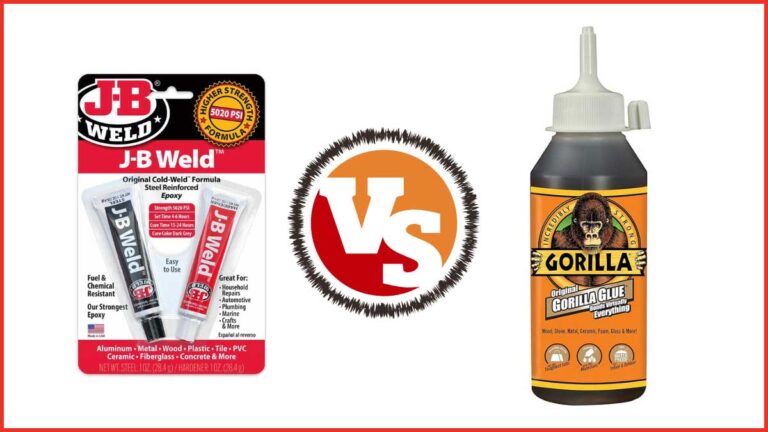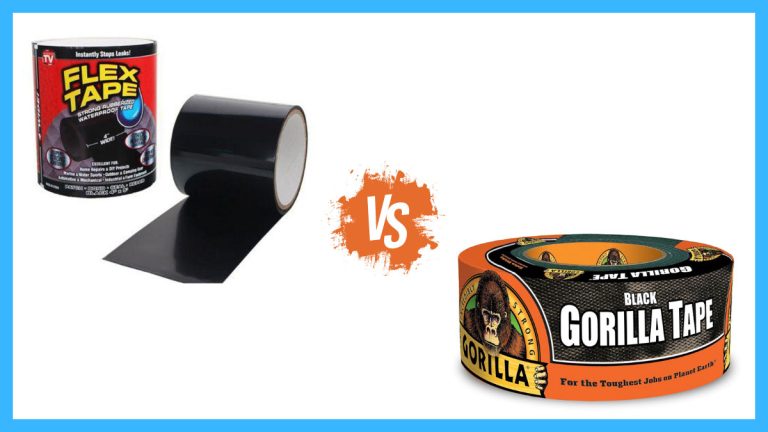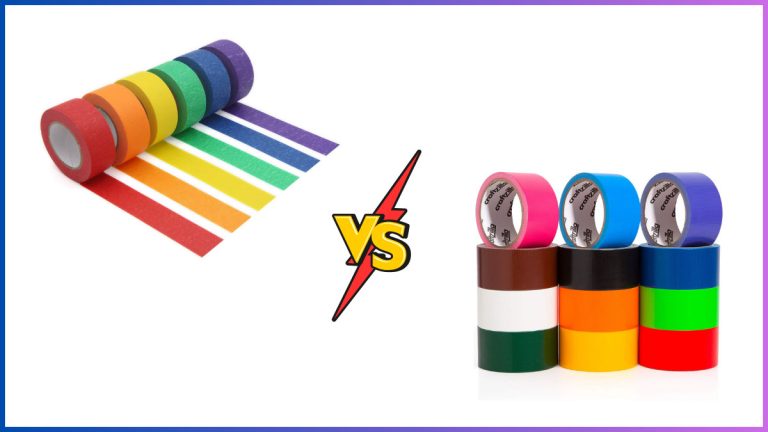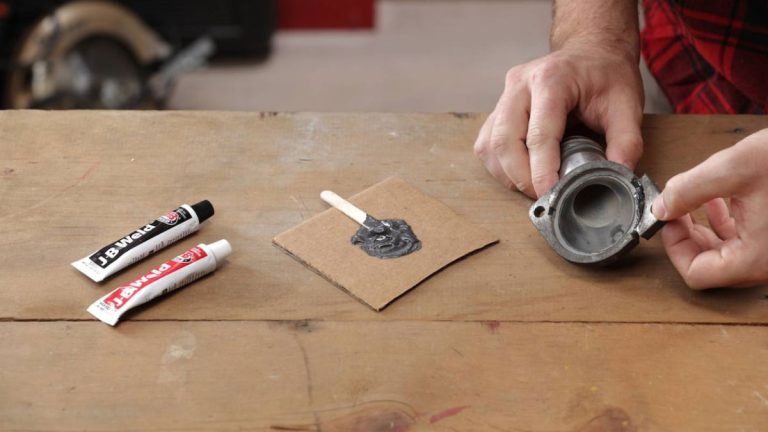Loctite Blue vs Red: Choosing the Right Threadlocker for Your Project
When you’re tackling a project that involves securing bolts and nuts, choosing the right threadlocker can make all the difference. Loctite Blue and Loctite Red are two of the most popular options, but which one should you use? Understanding the key differences between these two can save you time and prevent future headaches.
Loctite Blue offers medium strength, making it perfect for applications where you might need to disassemble parts later. On the other hand, Loctite Red provides high strength, ensuring that the bond remains secure even under extreme conditions. Knowing when to use each type will help you achieve the best results for your specific needs.
Key Takeaways
- Understanding Threadlockers: Threadlockers are liquid adhesives applied to fasteners to prevent loosening due to vibration, shock, or thermal expansion.
- Loctite Blue (Medium Strength): Ideal for applications requiring potential disassembly with high torque; commonly used in automotive engines and maintenance tasks.
- Loctite Red (High Strength): Best for permanent installations subject to severe vibrations and high temperatures, such as heavy machinery and construction equipment.
- Application Preparation: Clean and dry threads thoroughly, inspect components for damage, and apply threadlocker evenly for optimum adhesion.
- Performance Differences: Loctite Red withstands higher temperatures (up to 300°F) and offers superior vibration resistance, while Loctite Blue is suitable for moderate conditions and allows easier removal.
- Correct Usage: Selecting the appropriate threadlocker type and following specific application and curing guidelines ensure secure, reliable, and long-lasting bonds.
Overview Of Threadlockers
Threadlockers play a vital role in ensuring that threaded fasteners stay securely in place, preventing them from loosening due to vibration, shock, or thermal expansion.
What Are Threadlockers?
Threadlockers, also known as threadlocking adhesives, are liquid adhesives applied to the threads of fasteners. These adhesives bond with the metal and provide resistance to loosening due to various stresses.
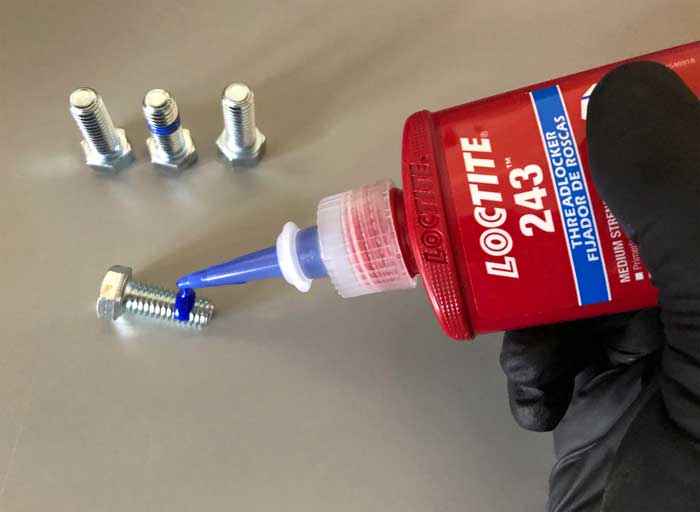
Key Terms:
- Threadlockers: Liquid adhesives used on threaded fasteners to prevent loosening.
- Vibration: Repeated motion that can cause fasteners to loosen.
- Thermal Expansion: Expansion and contraction due to temperature changes affecting fasteners.
Types Of Loctite Threadlockers
Loctite Blue (Medium Strength, Removable)
Loctite Blue is ideal for scenarios where you might need to disassemble components later. It provides medium adhesion strength, making it removable with the application of high torque.
- Adhesion Strength: Medium
- Applications: Suitable for tasks where future disassembly is needed.
- Removability: Requires high torque for removal.
- Common Versions: Loctite 242, Loctite 243, Loctite 248
- Use Case Examples: Maintenance or repair tasks
Loctite Red (High Strength, Permanent)
Loctite Red offers high strength and permanent bonding. It’s designed for applications where maximum security is required and disassembly is not anticipated.
- Adhesion Strength: High
- Applications: Ideal for permanent installations.
- Removability: Often requires heating to remove.
- Common Versions: Loctite 271, Loctite 272
- Use Case Examples: Heavy machinery, automotive applications
Benefits Of Using Threadlockers
Threadlockers provide several key benefits, including:
- Preventing Loosening: Guards against loosening due to vibrations or shocks.
- Sealing Threads: Helps seal threads and prevents corrosion.
- Extended Lifespan: Increases the lifespan of your components by preventing wear and tear caused by loose fasteners.
| Feature | Loctite Blue | Loctite Red |
|---|---|---|
| Strength | Medium | High |
| Removability | High torque | Requires heating |
| Applications | Maintenance and repair tasks | Permanent installations |
| Common Versions | Loctite 242, 243, 248 | Loctite 271, 272 |
Using the correct type of Loctite threadlocker can significantly improve the reliability and longevity of your projects.
Key Differences Between Blue And Red Threadlockers
When securing fasteners, understanding the differences between Loctite Blue and Loctite Red threadlockers is crucial. These variations impact your project’s durability and ease of future maintenance.
Strength And Bonding
Loctite Blue (Medium Strength):
- Adhesion Strength: Provides medium adhesion strength, making it suitable for applications where components might need future disassembly.
- Common Uses: General-purpose applications requiring some vibration and shock resistance. For example, it’s commonly used in automotive engines and power tools where moderate stress occurs.
Loctite Red (High Strength):
- Adhesion Strength: Offers high adhesion strength, ideal for applications experiencing severe vibration, shock, or thermal expansion.
- Common Uses: Permanent bonding for fasteners where disassembly is not anticipated. Applications include heavy machinery and construction equipment, ensuring fasteners remain secure under extreme conditions.
Removal And Reusability
Loctite Blue:
- Ease of Removal: Can be removed using high torque, making disassembly easier. Special chemicals or heat can also help removal.
- Suitability: Best for situations where you anticipate needing to take components apart in the future. For instance, it works well in maintenance-heavy environments where machinery parts frequently undergo servicing.
- Difficulty of Removal: Requires significant force or specialized methods such as heat application for removal due to its high strength.
- Application Fit: Suitable for use in settings where permanence is crucial and future disassembly isn’t planned. For example, you might use it in construction projects where components must remain in place without loosening over time.
By understanding these differences, you can choose the right threadlocker to enhance the longevity and reliability of your projects.
Specific Use Cases
Understanding which threadlocker to use in various scenarios can significantly improve your project’s reliability. Below, you’ll find specific use cases for Loctite Blue and Loctite Red.
Applications for Blue Threadlocker
- Medium Strength: Loctite Blue threadlocker has medium adhesion strength. It’s perfect for uses where you might need to disassemble components in the future.
- Removable with Torque: This threadlocker can be taken apart with high torque. If necessary, special chemicals or heat can also help disassembly.
- Common Uses: Ideal for general-purpose applications where vibration and shock are moderate. You might use it in automotive, household repairs, and other maintenance tasks where future disassembly is expected.
- Examples: Use on bolts and nuts that need to be tightened securely but might need removal, such as engine mounts, suspension components, and other parts requiring periodic maintenance.
Applications for Red Threadlocker
- High Strength: Loctite Red threadlocker offers high adhesion strength. It’s intended for permanent bonds in extreme conditions.
- Extremely Difficult to Remove: This threadlocker requires significant force or specialized methods for disassembly, making it unsuitable for applications needing future dismantling.
- Common Uses: Best for heavy-duty applications, like securing components in heavy machinery and construction equipment, where vibration and shock are severe.
- Examples: Apply to bolts and nuts in heavy machinery, construction equipment, and automotive applications where long-lasting security is crucial. Components bound with Loctite Red are rarely disassembled unless absolutely necessary.
| Feature | Loctite Blue | Loctite Red |
|---|---|---|
| Adhesion Strength | Medium | High |
| Removability | High torque, chemicals/heat if necessary | Significant force, specialized methods |
| Suitable for Future Disassembly | Yes | No |
| Common Uses | General-purpose, moderate vibration/shock | Heavy-duty, high vibration/shock |
| Examples | Engine mounts, suspension components | Heavy machinery, construction equipment |
Selecting the correct threadlocker is crucial. For applications requiring future disassembly, Loctite Blue is your go-to. For permanent, heavy-duty bonds, choose Loctite Red.
Performance In Different Conditions
Understanding how Loctite Blue and Red perform under different conditions helps you choose the right threadlocker for your projects. We’ll examine their performance in terms of temperature resistance and vibration resistance.
Temperature Resistance
Red Loctite:
- High Temperature Tolerance: Red Loctite withstands temperatures as high as 300°F (150°C). It’s suitable for applications exposed to intense heat like engines and heavy machinery.
- Performance Under Heat: Even in high-temperature environments, Red Loctite maintains its strong bond, making it ideal for projects needing enduring strength.
Blue Loctite:
- Moderate Temperature Tolerance: Blue Loctite handles temperatures up to 200°F (93°C). It’s adequate for general-purpose applications, such as automotive repairs, where extreme heat is not a factor.
- Stability: Blue Loctite retains its adhesive properties at this moderate temperature, ensuring secure fastening in a variety of conditions.
Vibration Resistance
Red Loctite:
- Superior Vibration Resistance: Red Loctite offers excellent resistance to vibrations, shocks, and impacts. It’s essential for use in scenarios where components are subjected to consistent and heavy vibrations, such as in industrial machinery.
- Long-Term Security: The permanent nature of Red Loctite ensures that fasteners remain secured over long periods, even under continuous stress.
- Good Vibration Resistance: Blue Loctite provides reliable resistance to vibrations, making it suitable for applications like automotive engines, power tools, and household appliances.
- Ease of Disassembly: While it holds against moderate vibrations, it allows for easier removal of fasteners compared to Red Loctite, which is beneficial in maintenance scenarios.
By examining the performance of Loctite Blue and Red under different conditions, you’ll be better equipped to select the right threadlocker for your specific needs. Loctite Red excels in high-temperature, vibration-heavy environments, while Loctite Blue provides versatile, medium-strength holding, ideal for general-purpose use with moderate temperatures and vibrations.
How To Apply Threadlockers
Applying threadlockers efficiently ensures the strongest bond and the best performance. Whether selecting Loctite Blue or Red, you need to follow precise steps to prepare the components and apply the adhesive correctly.
Preparation And Cleanliness
Correct preparation is essential. Dirty or oily threads can prevent optimal adhesion, so take the following steps to ensure cleanliness:
- Clean Threads: Ensure threads are free of any oils, greases, and contaminants. Use solvents like acetone or isopropyl alcohol to remove any residues.
- Inspect Components: Check for any damage or wear on the threads that could affect the bond strength. Replace any defective parts.
- Dry Threads: Make sure the threads are completely dry before applying the threadlocker.
Application Tips
Applying threadlockers involves several critical steps. Here are tips for achieving the best results:
- Select Appropriate Threadlocker: Choose Loctite Blue (medium strength) for parts you might need to disassemble or Loctite Red (high strength) for permanent bonds.
- Apply Evenly: Dispense a small drop onto the threads. Spread it evenly around the circumference to ensure uniform coverage.
- Torque Specification: Assemble the components within the time frame specified by the manufacturer. Tighten according to the recommended torque specification.
- Curing Time: Allow the threadlocker to cure fully according to the product’s instructions, usually ranging from 24 to 72 hours.
Key Terms
Torque: The measure of rotating force applied during assembly.
Curing: The process where the threadlocker hardens and forms a bond.
Acetone: A solvent used for cleaning and degreasing.
Detailed Application Table
| Loctite Type | Strength | Ideal Use Cases | Removability | Curing Time (hours) |
|---|---|---|---|---|
| Loctite Blue | Medium (242) | Applications requiring potential disassembly | High torque, heat | 24 to 72 |
| Loctite Red | High (271) | Permanent, high vibration, structural applications | Special tools, heat | 24 to 72 |
Summary
By following these guidelines for preparation and application, you ensure that Loctite threadlockers perform effectively, providing secure bonds for your applications. Use the appropriate threadlocker type, clean the threads thoroughly, and apply the product evenly for the best results.
Conclusion
Choosing between Loctite Blue and Loctite Red is essential for ensuring the success of your projects. Loctite Blue offers the flexibility of medium strength adhesion, making it perfect for applications where you may need to disassemble parts in the future. On the other hand, Loctite Red provides high strength adhesion, ideal for permanent bonds in extreme conditions.
Understanding the specific needs of your project and following proper application guidelines will help you achieve the best results. Whether you’re working on general-purpose repairs or heavy-duty machinery, selecting the right threadlocker can significantly enhance the reliability and longevity of your work.
Frequently Asked Questions
What is the difference between Loctite Blue and Loctite Red?
Loctite Blue is a medium-strength threadlocker suitable for applications that may require future disassembly. In contrast, Loctite Red is a high-strength threadlocker intended for permanent bonds in extreme conditions where disassembly is not anticipated.
When should I use Loctite Blue?
Use Loctite Blue for general-purpose applications involving moderate vibration and shock, such as automotive and household repairs. It’s ideal for situations where you may need to disassemble components in the future.
Can Loctite Red be removed?
Loctite Red can be removed, but it requires significant force or specialized methods, such as the application of heat or the use of special chemicals. It’s best suited for permanent applications where disassembly is rarely needed.
What types of applications are best suited for Loctite Red?
Loctite Red is recommended for heavy-duty applications in extreme conditions, such as securing components in heavy machinery and construction equipment. It withstands high temperatures and offers superior vibration resistance.
How do I apply threadlocker properly?
For effective application, clean the threads with solvents, inspect components for damage, and ensure threads are dry. Apply the appropriate threadlocker evenly, adhere to torque specifications, and allow adequate curing time for the best performance.
What are threadlockers?
Threadlockers are liquid adhesives applied to fasteners to prevent loosening due to vibration, shock, or thermal expansion. They ensure bolts and nuts stay securely in place, enhancing the reliability and longevity of mechanical assemblies.


